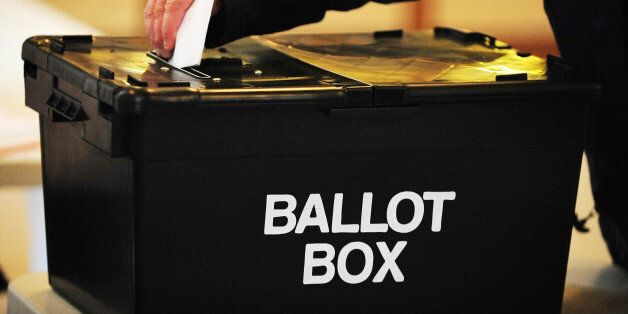
Last year's Northern Ireland Assembly election saw some fascinating developments. From a 50% increase in women's representation, to the growth of cross-community parties and some surprise upsets, it was testament to an evolving democracy, under a voting system that allows voters' diverse views to be represented.
For the ERS, it was an opportunity to look at how voters are using Northern Ireland's proportional STV system. So we asked four academics - Prof John Coakley and Prof John Garry at Queen's University Belfast, as well as Dr Neil Matthews at the University of Bristol and Prof James Tilley at the University of Oxford - to do exactly that.
Today, we've published their findings, drawing on the largest ever survey database of Northern Irish voters, analysing how they rank candidates and parties.
This marks the first report on Northern Ireland by the ERS in several decades, and uses data from thousands of respondents - over 4,000 - to create the largest database of voting patterns for NI.
The report, 'The 2016 Northern Ireland Assembly Election: How Voters Used STV', finds that while there are divisions in how people vote, a significant chunk of voters are 'crossing the divide'.
And it shows that despite only a small number - 4% of Catholics and 2% of Protestants - 'first preferencing' an 'opposite' bloc party (what would likely be their vote under First Past the Post), the picture is more diverse and interesting further down the ballot:
- 18% of all Protestant preferences and 25% of Catholics' go to cross-community parties
- Overall, 21% of all voters' preferences express some preference for a cross-community party -allowing a possibility for 'crossing the divide' that would be far more difficult under a majoritarian, winner-takes-all system like FPTP
- 8% of preferences expressed by Catholics are for a unionist party at some point on their voting paper, and 6% of preferences by Protestants are for a nationalist party
- 17% of Protestants and 20% of Catholics first preference a 'centrist' (i.e. cross-community) party - votes which would most likely not result in Stormont representation under a First Past the Post system
The launch follows debate this week about parties recommending their supporters give their second preference to other 'blocs'.
So how was the research done? Nearly 2,500 filled out mock ballot papers reflecting how they voted in their constituencies - allowing a rigorous look at how they expressed their preferences under the STV system, and focusing on the different communities, including the extent to which unionists and nationalists vote for other blocs.
What it shows is that STV allows a significant chunk of citizens to 'cross the divide' when it comes to different communities, with a quarter of all Protestant preferences and a third of Catholics' preferences going to non-unionist and non-nationalist candidates respectively.
Here's some of the other findings:
- Nearly a third (32%) of all preferences were for candidates outside the 'Big Four' parties (DUP, SF, UUP, SDLP) - a 'window for diversity that simply wouldn't be there without Northern Ireland's proportional voting system,' say the ERS
- 24% of all Protestant preferences and 33% of Catholics' preferences go to non-unionist and non-nationalist candidates respectively
- Northern Irish citizens make use of the ability to rank candidates, with the average voter expressing preferences for 3.4 candidates
All this offers food for thoughts ahead of next month's Assembly election. The complexities of contemporary politics - both in Northern Ireland and elsewhere - call for a close look at how politics is changing and developing, and this analysis is a starting point for that.
We know that STV opens the door for a more open and less divided politics. And while voters aren't necessarily using it to the fullest extent yet in Northern Ireland, there is a window of opportunity for it to grow, when it comes to breaking down community barriers.
In terms of how votes are reflected in seats, what is clear from this unprecedented research is that STV is allowing a broad range of views to be both expressed and represented, where this simply wouldn't happen under First Past the Post - adding both diversity and openness to Northern Irish politics, as well as feeding through into real cross-community representation in Stormont.
For all those who follow politics, this is a window on voting habits in Northern Ireland that goes far beyond the usual analysis looking solely at the end results or just first preferences.
The development of devolution and power-sharing in Northern Ireland during the past decade has opened a new window for pro-democracy organisations and NGOs to work with parties and civil society groups in the region. We'll be looking at next month's elections Assembly election and following developments. So watch this space for more from us in Northern Ireland!
